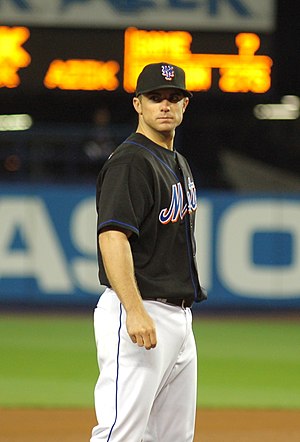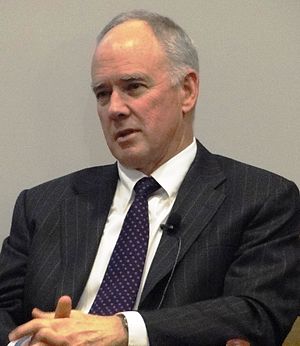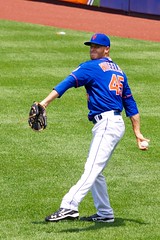Two-time Mets All-Star catcher Todd Hundley was one of the few offensive bright spots for most of the 1990s.
Shale Briskin
MM Assistant Editor
First off, my apologies for not getting this done before the All-Star Game last night. I was already spending a lot of time at Fan Fest this past weekend, but at the last minute yesterday, I was able to get tickets to the All-Star Game and it was a great time! I hope anyone else that went had a blast well. With that being said I will complete the rest of the series shortly. Onto the 1990s!
As the Mets entered the 1990s, they were coming off six consecutive winning seasons and the best six year stretch in team history. They started the decade well by winning 91 games in 1990. However, beginning in 1991, the Mets went through a down cycle that lasted through 1996. In 1997, the Mets surprised many by winning 88 games despite lacking a genuine superstar. They finished with the exact same record in 1998, but made some critical moves for the future. Finally, in 1999, the Mets won the NL Wild Card and got back to the postseason for the first time since 1988.
1990: The 1990 Mets featured three All-Stars in Darryl Strawberry, Frank Viola and John Franco.
In what ended up being his final season as a Met, Strawberry batted .277 with 37 home runs and a career high 108 RBI. 1990 was also the final season in which Strawberry was an All-Star. He struck out in his only at-bat at the All-Star Game that year.
The 1988 AL Cy Young Award winner with the Twins, Frank Viola was traded to the Mets in 1989 and had a great season in 1990. His year included a 20-12 record, a 2.67 ERA and 182 strikeouts. Viola threw a scoreless inning in the All-Star Game and allowed one hit.
New closer and Brooklyn native John Franco was traded prior to the 1990 season in exchange for fellow southpaw closer Randy Myers. Myers may have won a World Series in 1990 with the Reds, but Franco ended up having a very successful career himself as a Met.
Franco was 5-3 with a 2.53 ERA and 33 saves that season. He would go on to have even better seasons with the Mets later in his career, but this was the only year in which he appeared in an All-Star Game as a Met. Franco threw a scoreless inning himself at the Midsummer Classic.
1991: As the Mets began to decline in 1991, they only had two representatives at the All-Star Game. Viola was joined by third baseman Howard Johnson at the Midsummer Classic, which was the second appearance for each as a Met.
Viola had been 10-5 at the All-Star break with a 2.80 ERA. However, his poor second half resulted in a 13-15 record and a 3.97 ERA. At the All-Star Game, Viola pitched a scoreless inning and allowed one walk.
Johnson on the other hand had one of the best seasons in his career with a .259 average, 38 home runs and a Mets single season record (which was later tied by Bernard Gilkey in 1996 and broken by both Mike Piazza and Robin Ventura in 1999) 117 RBI. He was hitless in two at-bats at the All-Star Game that year.
1992: The "Worst Team Money Could Buy" in 1992 greatly underachieved, as the Mets spent a lot of money on veteran free agent signings. By Opening Day, veteran stars like Bobby Bonilla, Eddie Murray and Bret Saberhagen were all Mets.
With almost the entire team underachieving, the only Mets' All-Star in 1992 was David Cone. Cone was 13-7 with a 2.88 ERA and 214 strikeouts before getting traded to the Blue Jays at the end of August for Jeff Kent and Ryan Thompson. Cone pitched a scoreless inning in the All-Star Game with one strikeout.
1993: If Mets fans were already fed up with how bad the 1992 team was, it ended up being a mere preview for 1993. The Mets lost over 100 games in 1993 for the first time since 1967. The only All-Star for the Mets that year was Bobby Bonilla, who hit .265 with 34 home runs and 87 RBI in his best seasons as a Met. Bonilla got a single in his only at-bat in the All-Star Game.
1994: In what ended up being a strike-shortened season, the 1994 Mets began to retool and build talent from within. When the season ended on August 11, the Mets nearly as many wins (55) as they did a year ago (59).
One bright spot on the rather mediocre team was former two-time AL Cy Young Award winner Bret Saberhagen, who pitched like he did with the Royals in the 1980s. He was also the Mets' lone All-Star in 1994. Saberhagen went 14-4 in 24 starts with a 2.74 ERA, 143 strikeouts and just 13 walks, which was amazing in itself. Saberhagen though did not pitch in the All-Star Game.
1995: The 1995 Mets continued to get younger as up and coming talent such as Edgardo Alfonzo, Jeff Kent, Rico Brogna, Carl Everett and Todd Hundley began to really develop in the lineup, while Bill Pulsipher and Jason Isringhausen both came up midseason to boost the starting rotation.
However, the Mets' only All-Star in 1995 was Bobby Bonilla, who was playing third base that year. Bonilla was hitting .325 with 18 home runs and 53 RBI before finally getting traded to the Orioles for Alex Ochoa and Damon Buford. He struck out in his only at-bat in the All-Star Game.
Lance Johnson had one of the Mets' best All-Star Game performances in 1996.
1996: The 1996 Mets were best remembered for having three hitters with amazing individual seasons. Unfortunately, only two of them ended up being All-Stars. The player that got snubbed was left fielder Bernard Gilkey, who hit .317 with 30 home runs, 117 RBI, 108 runs scored and 44 doubles. It was certainly one of the worst snubs in Mets history.
The ones that did make it though had two of the best seasons in team history. Center fielder Lance Johnson signed a two-year contract with the Mets and immediately put his name in the record books. Johnson hit .333 with 9 home runs, 69 RBI, 117 runs scored, 227 hits, 31 doubles, 21 triples, 50 stolen bases and 327 total bases. With those numbers, Johnson set single season team records in runs scored, hits, triples and total bases. The hits and triples records still stand today.
At the 1996 All-Star Game, Johnson made quite a case to be the All-Star Game MVP with three hits, including a double, plus one run scored and one stolen base in four at-bats. Johnson got the start in center field due to an injury to Tony Gwynn. Dodgers catcher and future Met Mike Piazza though ended up winning the award.
The other Mets All-Star was catcher Todd Hundley, who had been the Mets' starting catcher since 1992. Hundley had a career season himself with a .259 average, 41 home runs, 112 RBI and 32 doubles. Hundley's 41 home runs set a new Mets single season record and also set a new single season record among catchers, which Javy Lopez would break in 2003. Carlos Beltran would tie Hundley's team record in 2006.
Hundley did not reach base in his only at-bat in the 1996 All-Star Game.
1997: The Mets were not particularly expected to contend in 1997, but ended up winning 88 games, despite not having a genuine superstar on the team. One big reason why the Mets became more successful was thanks to Hundley's leadership as he had another great season.
Hundley raised his average to .273 and had 30 home runs, 86 RBI and a .394 OBP. However, by midseason, Hundley developed an elbow problem that eventually required surgery. He did not participate in the All-Star Game because of it and the injury limited his playing time in much of the second half of the season.
The other Mets' All-Star in 1997 was starting pitcher Bobby Jones, who had a career season that year. Jones went 15-9 with a 3.63 ERA. Jones pitched a scoreless inning in the All-Star Game and struck out both Ken Griffey Jr and Mark McGwire in the only All-Star Game appearance of his career.
1998: With Hundley recovering from elbow surgery throughout the first half of the 1998 season, the Mets felt they needed to make a big move to upgrade their depth at catcher. In May, they ended up pulling off a blockbuster trade in which superstar catcher Mike Piazza was traded from the Marlins for three prospects, including Preston Wilson, who is the son of former Mets outfielder Mookie Wilson.
Piazza gave the Mets a face of the franchise that they desperately needed. As a Met, Piazza hit .348 with 23 home runs and 76 RBI in 109 games. Altogether, Piazza batted .328 with 32 home runs and 111 RBI for the entire season. Piazza had one hit in three at-bats as the National League's starting catcher in the 1998 All-Star Game. It was a spot Piazza would hold for quite some time.
Piazza was joined that year by starting pitcher Rick Reed, who had one heck of a journey to becoming an All-Star. A former replacement player, Reed was given a chance by the Mets in 1997 to really establish himself as a great pitcher. After winning 13 games in 1997 with a 2.89 ERA, Reed had another great season in 1998 with a 16-11 record and a 3.48 ERA. Reed though did not end up pitching in the 1998 All-Star Game.
1999: To close out not just the decade, but also the century and millennium, the 1999 Mets finally put together a season that resulted in a postseason berth. They would advance to the NLCS against the Braves, but lost the series in six games.
Despite having such a great team, Piazza was the Mets' only All-Star in 1999. Piazza had one of his two best seasons as a Met that year with a .303 average, 40 home runs and 124 RBI. The latter two of the stats tied career highs he set in 1997. Piazza had one hit in two at-bats in the All-Star Game.
Stay tuned for the final installment, in which we recap the Mets' All-Star Game performances from 2000-2013.















































